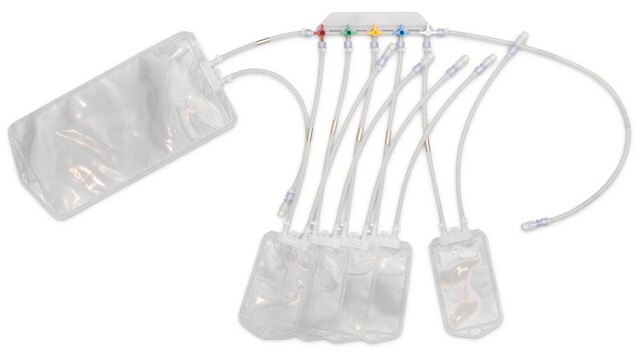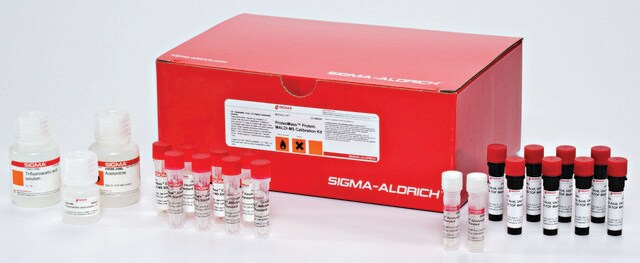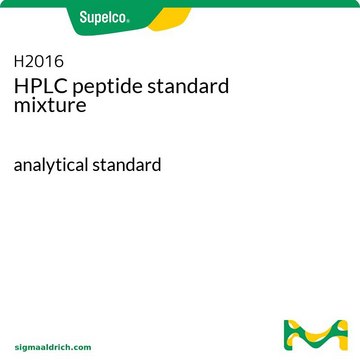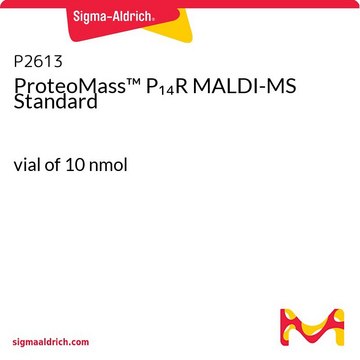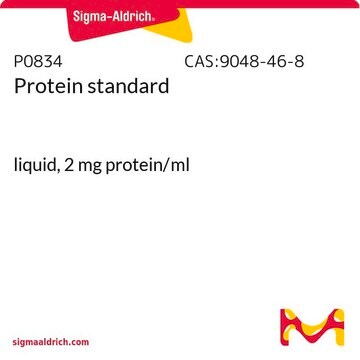UPS2
Proteomics Dynamic Range Standard Set
Protein Mass Spectrometry Calibration Standard
Sinônimo(s):
Dynamic Range Standards, Proteomics Standard Set
About This Item
Produtos recomendados
fonte biológica
human
Nível de qualidade
Formulário
ready-to-use solution
qualidade
Protein Mass Spectrometry Calibration Standard
concentração
10.6 μg/ampule protein
técnica(s)
mass spectrometry (MS): suitable
Condições de expedição
wet ice
temperatura de armazenamento
−20°C
Categorias relacionadas
Descrição geral
Aplicação
Proteomics Dynamic Range Standard Set has been used for the quantification of dynamic range universal protein standard on Orbitrap Analyzer using all ion fragmentation. It has been used as a standard for intensity-based absolute quantification of proteins (iBAQ) in LC-MS (liquid chromatography-mass spectrometry)/MS analysis.
Componentes do kit também disponíveis separadamente
- T6567Trypsin from porcine pancreas, Proteomics Grade, BioReagent, Dimethylated 20 μgSDS
produto relacionado
Palavra indicadora
Danger
Frases de perigo
Declarações de precaução
Classificações de perigo
Eye Dam. 1 - Repr. 1B - Resp. Sens. 1 - Skin Irrit. 2 - STOT SE 3
Órgãos-alvo
Respiratory system
Código de classe de armazenamento
6.1C - Combustible acute toxic Cat.3 / toxic compounds or compounds which causing chronic effects
Ponto de fulgor (°F)
Not applicable
Ponto de fulgor (°C)
Not applicable
Escolha uma das versões mais recentes:
Já possui este produto?
Encontre a documentação dos produtos que você adquiriu recentemente na biblioteca de documentos.
Os clientes também visualizaram
Artigos
The era of high-throughput proteomics has recently blossomed due in large part to advances in the methods by which proteins and proteomes are analyzed. Improved fractionation techniques, combined with advances in mass spectrometry, have decreased concerns of sample complexity, and directed more focus towards high-throughput techniques.
Conteúdo relacionado
Standardize Your Research. We offer both the Universal Proteomics Standard and the Proteomics Dynamic range Standard as complex, well-defined, well characterized reference standards for mass spectrometry.
Nossa equipe de cientistas tem experiência em todas as áreas de pesquisa, incluindo Life Sciences, ciência de materiais, síntese química, cromatografia, química analítica e muitas outras.
Entre em contato com a assistência técnica





